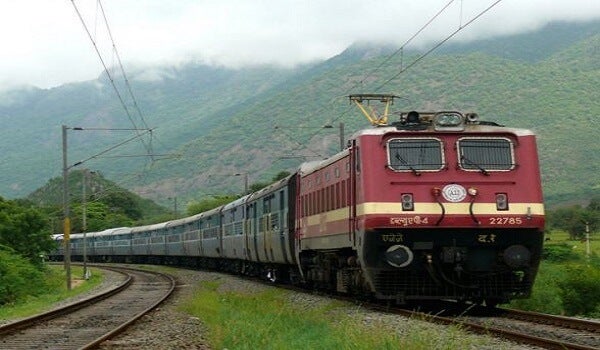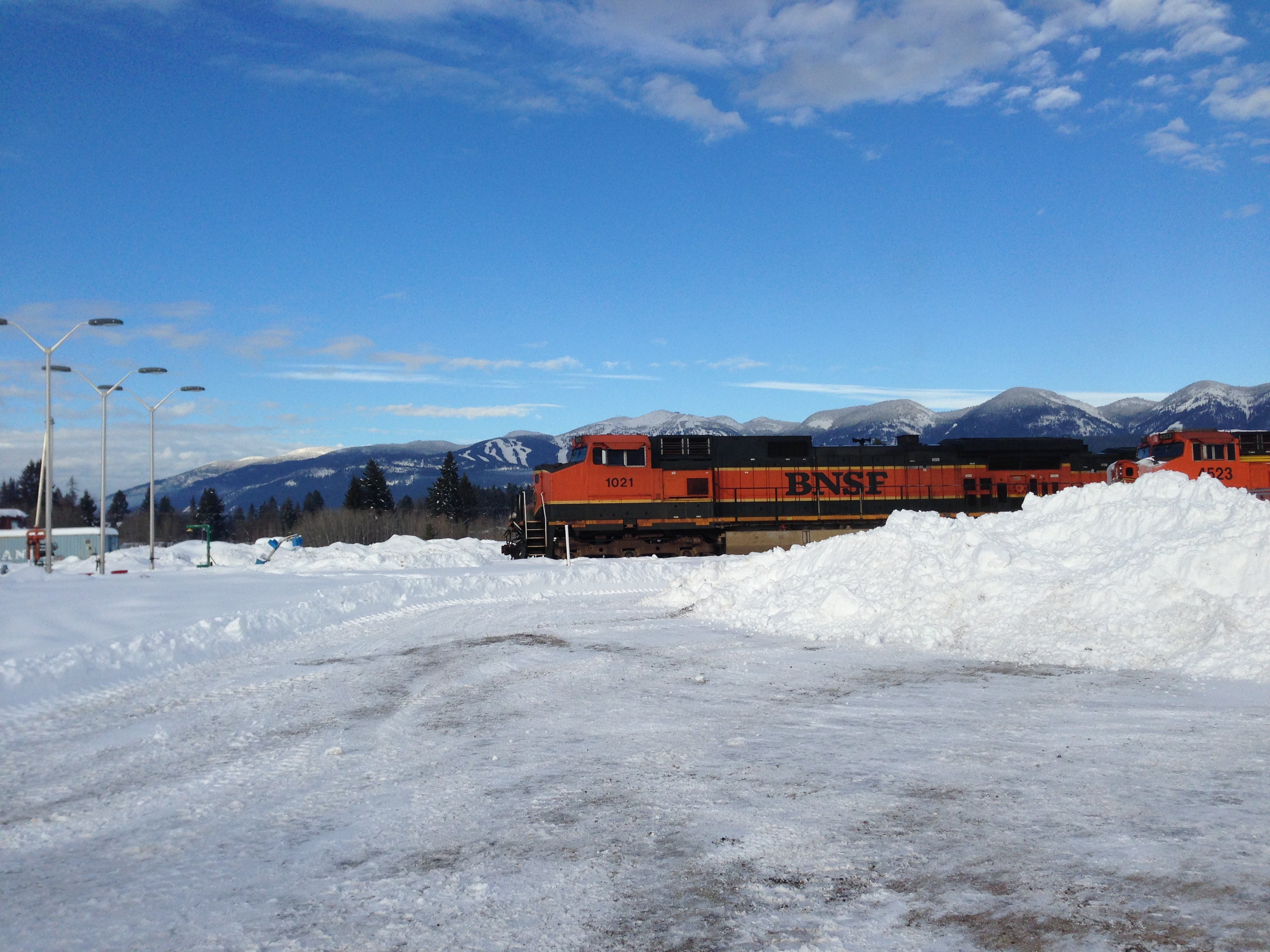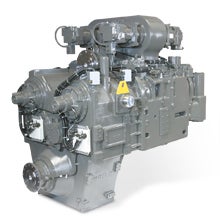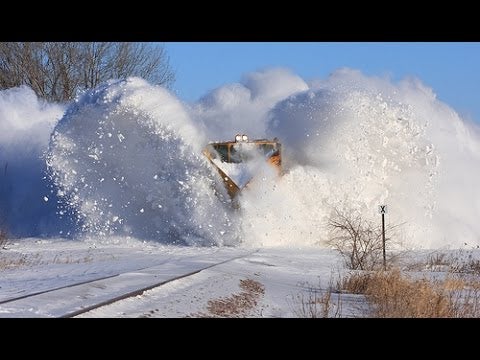 "Cé hé sin" (michael-m-mouse)
"Cé hé sin" (michael-m-mouse)
10/25/2016 at 18:21 • Filed to: Voith, Maxima, Trainlopnik
 0
0
 18
18
 "Cé hé sin" (michael-m-mouse)
"Cé hé sin" (michael-m-mouse)
10/25/2016 at 18:21 • Filed to: Voith, Maxima, Trainlopnik |  0 0
|  18 18 |
Specifically, on this.

It’s a Voith Maxima locomotive which is the most powerful single engined diesel hydraulic model in the world. Sadly it turned out to be an answer to a question hardly anybody had asked and so production has ceased after only a couple of dozen being made.
Anyways, it’s a 3,600 kw or 4,800 bhp loco which can if so asked move 3,000 tonnes at up to 120 kmh or 75 mph.
So, how many gears does it need, given that heavy road going vehicles can have more than a dozen?
Two.
 DynamicWeight
> Cé hé sin
DynamicWeight
> Cé hé sin
10/25/2016 at 18:26 |
|
This is because trains basically don’t require any sort of acceleration right? They take their time to get up to speed and then just stay there.
 For Sweden
> Cé hé sin
For Sweden
> Cé hé sin
10/25/2016 at 18:29 |
|
This is now a train thread

 Cé hé sin
> For Sweden
Cé hé sin
> For Sweden
10/25/2016 at 18:33 |
|
I see a clue that that’s an Indian train.
 Cé hé sin
> DynamicWeight
Cé hé sin
> DynamicWeight
10/25/2016 at 18:39 |
|
I don’t actually know why. Diesel hydraulics use a combination of torque converters (first gear) and fluid couplings (any further gears) and so they’re basically using the torque converter as a CVT to get up to speed and then switching to a more efficient fluid coupling. They do this by draining and filling them rather than use friction materials so it’s probably a reliability and durability issue as well. Little to wear out and if you can prevent overheating the system should last a long time.
 beardsbynelly - Rikerbeard
> Cé hé sin
beardsbynelly - Rikerbeard
> Cé hé sin
10/25/2016 at 18:40 |
|
well, 2 is all you need when you’re probably never going to go up a gradient steeper than 1.5%.
 Stephenson Valve Gear
> Cé hé sin
Stephenson Valve Gear
> Cé hé sin
10/25/2016 at 18:40 |
|
Who knew that you could put a Chevy Powerglide in a locomotive?
 Cé hé sin
> beardsbynelly - Rikerbeard
Cé hé sin
> beardsbynelly - Rikerbeard
10/25/2016 at 18:42 |
|
Yes, there is that.
 facw
> DynamicWeight
facw
> DynamicWeight
10/25/2016 at 18:43 |
|
Are these things driven through a traditional transmission? I thought they were all diesel electric series hybrids, so you run your diesel at whatever is most efficient, and then provide the current to drive the motors for whatever acceleration you want?
 facw
> Cé hé sin
facw
> Cé hé sin
10/25/2016 at 18:44 |
|
Very weird that the British created Standard Gauge but then installed wide-gauge in India (I’ve read they were concerned about trains blowing over in the monsoon winds, which doesn’t seem like a thing that should happen?)
 Highlander-Datsuns are Forever
> Cé hé sin
Highlander-Datsuns are Forever
> Cé hé sin
10/25/2016 at 18:46 |
|

Hopefully this train thread doesn’t go cold.
 Cé hé sin
> Stephenson Valve Gear
Cé hé sin
> Stephenson Valve Gear
10/25/2016 at 18:48 |
|
Very similar, in the sense that each has two gears and no clutch.
Here’s the train one. Probably weighs more than any car with the Poweglide!

 Cé hé sin
> facw
Cé hé sin
> facw
10/25/2016 at 18:49 |
|
That as well ( I was actually thinking of the Hindi script on the front!)
 Cé hé sin
> facw
Cé hé sin
> facw
10/25/2016 at 18:59 |
|
Diesel locomotives are usually diesel/electric nowadays for the reason you set out, plus conventional transmissions weren’t originally available with a high enough capacity. Voith, who make most of the world’s hydraulic rail transmissions, designed a new unit for a customer who then didn’t proceed and so they designed their own locomotive around it instead.
Hydraulic transmissions use multiple fluid couplings, one for each gear. They use a torque converter to get going and then drain that and fill a fluid coupling for second gear and another for third if fitted. They’re very smooth and you can just detect the gearchanges if you listen out.
Smaller commuter-type trains sometimes use conventional automatics, normally ZF or equivalent bus ones, and are described somewhat misleadingly as diesel/mechanical. They sound and feel like buses.
 Cé hé sin
> Highlander-Datsuns are Forever
Cé hé sin
> Highlander-Datsuns are Forever
10/25/2016 at 19:02 |
|

 Stephenson Valve Gear
> Cé hé sin
Stephenson Valve Gear
> Cé hé sin
10/25/2016 at 19:03 |
|
That is a beast. In the states, the SP Krauss-Maffei diesel locos were about the only major diesel-hydraulics in service. Voith also made the tranmission for them, and they used multiple torque converters that would be filled or drained with oil to effect “gear” changes. They were different sizes and only one would be filled at a time... I was always curious about how the locomotive acted during the “shift” when one converter was filling and the other was draining. Neat idea, but diesel-electric was so well established that the hydraulics ended up being the red-headed stepchildren of the fleet...
 Cé hé sin
> Stephenson Valve Gear
Cé hé sin
> Stephenson Valve Gear
10/25/2016 at 19:15 |
|
I’ve been on a commuter train (not something I normally need to do) which uses multiple units with an engine under each unit and I was surprised to hear two gearchanges each time it moved away from a stop. It therefore had Voith hydraulic transmissions, and what you hear is the engine slowing down, pausing for a second or two and then building up revs again.
Mr Google tells me they’re still used in commuter trains and still very much in production. You can sometimes find what train people call mechanical transmissions which are actually modified bus automatic gearboxes and which sound like buses with noticeable and frequent changes.
 wafflesnfalafel
> Highlander-Datsuns are Forever
wafflesnfalafel
> Highlander-Datsuns are Forever
10/25/2016 at 22:14 |
|
sexy - those classic GEs are good looking machines in BNSF heritage. You need an extra 4400hp? Gotcha covered. We get a bunch of those out here pulling/pushing oil and coal over Stevens Pass.
 Highlander-Datsuns are Forever
> wafflesnfalafel
Highlander-Datsuns are Forever
> wafflesnfalafel
10/25/2016 at 23:01 |
|
This is the high line subdivision so ends up in Seattle eventually. Lots of oil and commodity trains, the coal trains go through Missoula and then up to Spokane.